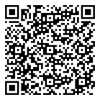What is plasma etching
- Author:
- Origin:
- Time of issue:2021-05-18 13:37
- Views:
(Summary description)Plasma etching (also known as dry etching) is one of the key processes in integrated circuit manufacturing. Its purpose is to completely copy the mask pattern to the surface of the silicon wafer, and its range covers the size of the front-end CMOS gate (Gate) Control, as well as the etching of back-end metal aluminum and the etching of Via and Trench.
What is plasma etching
(Summary description)Plasma etching (also known as dry etching) is one of the key processes in integrated circuit manufacturing. Its purpose is to completely copy the mask pattern to the surface of the silicon wafer, and its range covers the size of the front-end CMOS gate (Gate) Control, as well as the etching of back-end metal aluminum and the etching of Via and Trench.
- Categories:Products Information
- Author:
- Origin:
- Time of issue:2021-05-18 13:37
- Views:0
Plasma etching (also known as dry etching) is one of the key processes in integrated circuit manufacturing. Its purpose is to completely copy the mask pattern to the surface of the silicon wafer, and its range covers the size of the front-end CMOS gate (Gate) Control, as well as the etching of back-end metal aluminum and the etching of Via and Trench. Today, no integrated circuit chip can be completed without plasma etching technology. The investment in etching equipment accounts for about 10% to 12% of the equipment investment in the entire chip factory, and its process level will directly affect the quality of the final product and the advancement of production technology.
The first technical literature reported on plasma etching was published in Japan in 1973, and soon attracted the attention of the industry. The parallel electrode etching reaction chamber (Reactive Ion Etch-RIE), which is still widely used in integrated circuit manufacturing, was proposed in 1974.
Figure 1 shows the cross-sectional schematic diagram and important experimental parameters of this reaction chamber. It is composed of the following items: a vacuum chamber and vacuum system, a gas system for providing precise gas types and flow, radio frequency power and its Adjust the matching circuit system.
The principle of plasma etching can be summarized as the following steps:
1. Under low pressure, the reaction gas is excited by radio frequency power to produce ionization and form plasma. The plasma is composed of charged electrons and ions.
Under the impact of electrons, gas can not only be converted into ions, but also absorb energy and form a large number of active groups (Radicals)
2. The active reactive group and the surface of the etched material form a chemical reaction and form a volatile reaction product
3. The reaction product is separated from the surface of the etched material and is drawn out of the cavity by the vacuum system.
In the parallel electrode plasma reaction chamber, the etched object is placed on the electrode with a small area. In this case, a DC bias voltage will be formed between the plasma and the electrode, and make the electrode positively charged. The reactive gas ions accelerate to hit the surface of the etched material. This ion bombardment can greatly accelerate the chemical reaction on the surface and the desorption of the reaction product, resulting in a high etching rate. It is precisely because of the existence of ion bombardment that each Anisotropic etching is realized.
Scan the QR code to read on your phone
Related News



Follow us
Follow the public account
Copyright © 2021 Shenzhen Uniplasma Technology Co., Ltd. 粤ICP备17047011号 Powered by www.300.cn






